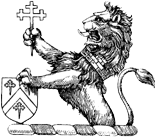
Evil, Ordinary & Extraordinary
WHERE DOES IT COME FROM?
James Joyce was right. Truth pops out from the most unexpected places. My best definition of evil came from M. Scott Peck’s eight-year-old son: “Daddy, evil is ‘live’ spelled backwards.”
Evil is anything radically opposed to life. If the difference between human life and animal life is that we can grow in our ability to know and love, then evil is anything that degrades us — makes us less able to know and love. Evil is killing — not just the body, but the self, the spirit, the soul. And it needn’t work fast; slow, small, and steady is just as effective in the long run.
We don’t talk enough to our young about evil. They are willing to accept that there is evil, but it’s “out there”: war, exploitation, drugs. But it is difficult to convince them that they are themselves capable of increasing the flood of evil. Especially with kids brought up on Jesus, the Warm Fuzzy, it’s no easy task to make them accept that casual character assassination negates a human being, that shunning ugly kids or unathletic kids is the same bigotry as the Klan’s. Petty evil is still evil. We’re in the same business as the Mob, but the Mob has a broader perspective and more guts.
Broadly, there are two brands of evil. Physical evil is destructive of life — tornadoes, cancer, drought, death itself. But physical evil occurs most often through no human fault. It is something we have to lay at the feet of God, and defending God against the endless litany of “Why-would-a-good-God…” charges is an enormous task I can’t get into here.
You May Also Enjoy
Pseudo-mystical phenomena have occurred in cases of seemingly pious individuals who are unwittingly tricked by demons, sometimes for years.
God does not tempt us directly but allows us to be tempted while providing us with all the graces necessary to resist evil.
Many cannot bring themselves to believe in Hell, which Christ tells us repeatedly (40 times) is an essential part of his religion.

